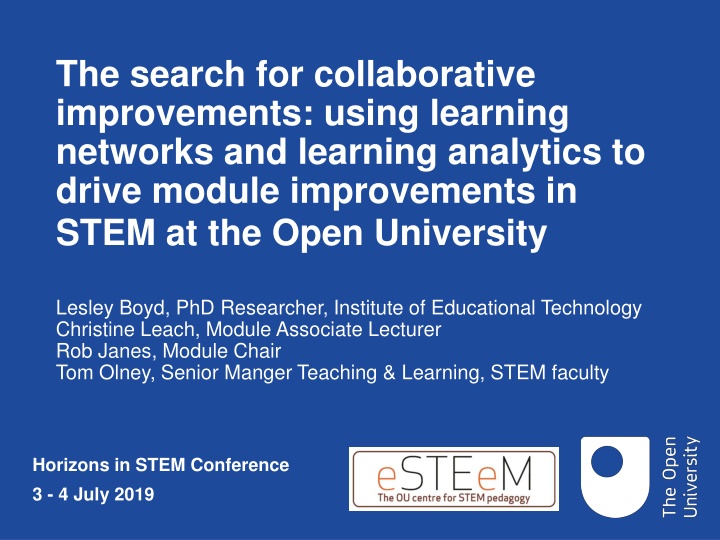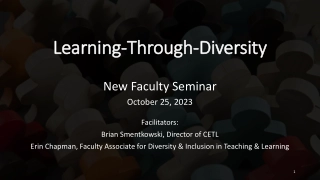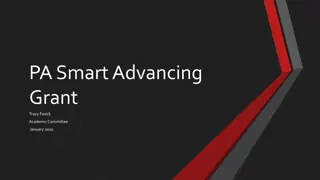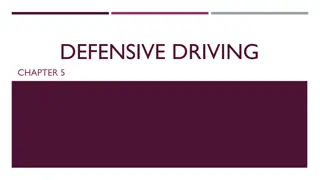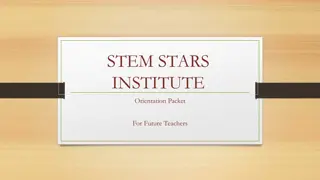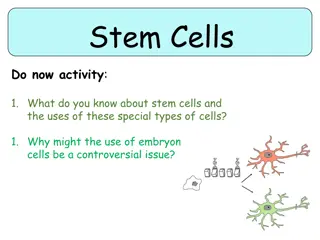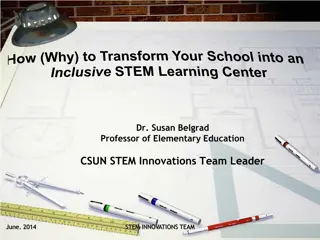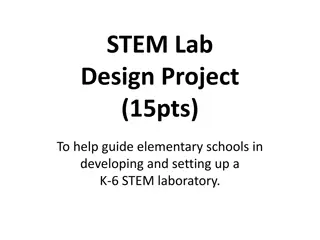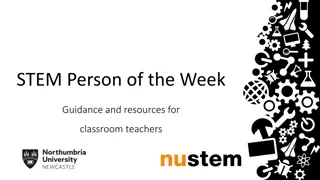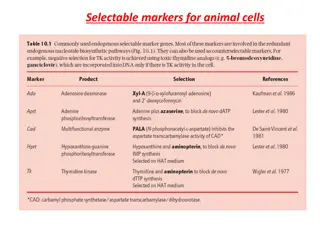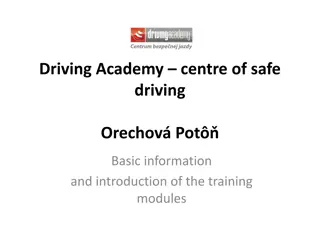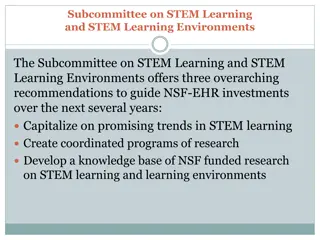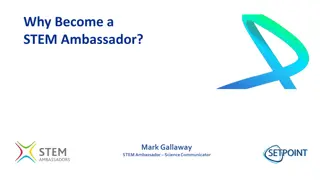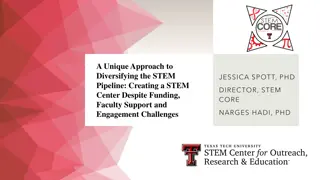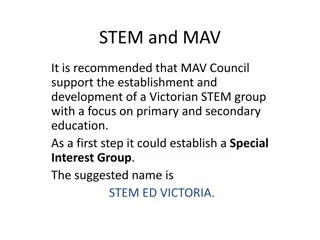Collaborative Improvements Driving Module Enhancements in STEM at Open University
This presentation explores the use of learning networks and analytics to improve STEM modules at Open University. The research methodology, progress updates, and the concept of learning networks are discussed, with a focus on collaborative and technology-mediated interventions. Insider action research and Grounded Theory Method are employed to drive practical improvements in a Higher Education distance learning context.
Download Presentation

Please find below an Image/Link to download the presentation.
The content on the website is provided AS IS for your information and personal use only. It may not be sold, licensed, or shared on other websites without obtaining consent from the author.If you encounter any issues during the download, it is possible that the publisher has removed the file from their server.
You are allowed to download the files provided on this website for personal or commercial use, subject to the condition that they are used lawfully. All files are the property of their respective owners.
The content on the website is provided AS IS for your information and personal use only. It may not be sold, licensed, or shared on other websites without obtaining consent from the author.
E N D
Presentation Transcript
The search for collaborative improvements: using learning networks and learning analytics to drive module improvements in STEM at the Open University Lesley Boyd, PhD Researcher, Institute of Educational Technology Christine Leach, Module Associate Lecturer Rob Janes, Module Chair Tom Olney, Senior Manger Teaching & Learning, STEM faculty Horizons in STEM Conference 3 - 4 July 2019
Using learning networks and learning analytics to drive module improvements in STEM at the UK OU A story of combining theory and practice - insider action research and Grounded Theory Method (GTM) in a Higher Education distance learning context 1. 2. 3. 4. What s a learning network? Methodology Brief history of the project Progress so far Phase 1 (2017) & Phase 2 (2018) 5. Signposting trial 6. Completing the research 7. References 06/03/2025
Whats a learning network? Working definition: a task-driven technology-mediated intervention, connecting together individuals of disparate backgrounds to learn how to address a specified outcome or goal; the learning may be formal, informal, social, organisational or creative. Task driven (what shall we do next?), but no known right answer Technology-enabled (in contrast to technology-enhanced) Collaborative and equitable Structured Connecting together disparate practitioners across different contexts and boundaries, eg remote tutors, module teams, staff tutors, Learning Design Aiming for a particular practical improvement outcome Using affordances of collaborative learning technology 06/03/2025
Methodology Technology-enabled participatory action research Point of departure is that insider action research is one way to develop new organisational capabilities Answer a perennial organisational need to close a feedback loop between remote module tutors and campus based teams, to develop a joint understanding of teaching and learning design challenges, and to put tutors as close as possible to the development of solutions. Can learning networks help to achieve this? Learn together in an unfolding and emergent process Joint ownership: discussion, action planning, implementation & evaluation Underpinned by Grounded Theory Method (GTM) Exploring a new conceptual framework regarding the unfolding process, and driving round the progressive action research cycles in a structured and rigorous manner. 06/03/2025
Action research table top model Source: Coghlan, D. and Brannick, T. (2014) Doing Action Research in Your Own Organisation, London, Sage. 06/03/2025
A collaborative conversation Image: Getty Images/iStockphoto 06/03/2025
Methodology why GTM? A theory-building, not theory-testing or theory-verification methodology. Systematic data collection and analysis. Far better to allow the data to tell its own story in the first instance, build a theory, then, subsequently, engage your theory with the theory that you thought you might impose initially. You can see if your emergent theory confirms or challenges existing theories. So, potentially GTM has a huge role to play in theory building, in all disciplines . Urquhart, C. (2013) Grounded Theory for Qualitative Research: A Practical Guide, London, Sage. Sannino and Engestr m (2017) describe looking in vain for recent discussions of theoretically and methodologically ambitious approaches of intervention research in major journals. Sannino, A. and Engestr m, Y. (2017) Co-generation of societally impactful knowledge in Change Laboratories. Management Learning, vol.48, no.1, pp.80-96. 06/03/2025
Brief history of the project Phase 1 (Oct 2017 modules): learning networks hosted in dedicated VLE sites for three pilot modules on conceptually challenging Tricky Topics being experienced by students. discussion forums and online workshops used to seek feedback from tutors, in order to collaboratively identify Tricky Topics and suggest improvements or produce learning interventions. One particular module team very successfully identified a list of conceptual Tricky Topics, plus a list of additional issues including pace and volume of material. tutors designed and implemented four innovative Tricky Topics intervention videos, which have been in use on the 2017 and 2018 module website, shared with other modules and emulated elsewhere. Phase 2 (Oct 2018 module): second cycle of collaborative work building on the analysis from the first cycle. Since tutors had identified concerns about pace and volume of material, an online workshop and discussion forum shared and interpreted specialised learning design analytics visualisations with tutors with the aim of identifying areas for further interventions. 06/03/2025
Learning Network site 06/03/2025
Using learning design analytics The three visualisations discussed with tutors were: 1) expected student workload by activity type 2) comparison of expected student workload and MT advised workload per week 3) comparison of expected student workload by activity type and average VLE engagement 06/03/2025
Results so far: unfolding process Phase 2 The learning network discussions have highlighted a number of issues, represented in an interactive spreadsheet, which organises the supporting qualitative evidence. These issues include pace and volume of material, prerequisite knowledge and online / offline study behaviour. All these issues have contributed towards the planning of four actions: production and trialling of signposting material finding out more re student preparedness finding out more re online / offline study behaviour, and which resources students download clarifying issues re the use of OU Analyse The trial signposting materials have been produced by a tutor, reviewed by the module team, and implemented in the current module presentation. An end of module questionnaire and follow up session for students was run based on the identified issues. 06/03/2025
Process interactive spreadsheet Two years of qualitative feedback from the 2017 and 2018 learning network discussion forums, which is now represented for both years in a new navigable interactive spreadsheet. 06/03/2025
Results so far: signposting trial Level 2 Chemistry is divided into 14 Blocks providing students with a broad foundation in physical, inorganic and organic chemistry. It is the first full chemistry module studied by our students and makes up one sixth of a degree. The Blocks chosen for this pilot were: Molecular characterisation and spectroscopic analysis Introduction to the first-row transition metals The signposting material aims to cover: prerequisite knowledge/conceptual understanding required to study the Block key points regularly examined material that is crucial to learning but not directly tested material written for interest only. 06/03/2025
Block Signposts Developed to include: Overview Knowledge and understanding; Learning Outcomes Objectives tested directly in assignments and the exam Background and key terms from earlier in course Summary of topics a brief summary of each section and then a list of sections which are not crucial but with the caveat that they are likely to help your overall understanding whether topics were crucial, essential reading, or not essential an indication of whether the topic is examined and which parts do not need memorising. Considerations: We do not want to give students more work this is to save time for those who are finding it hard to keep up or have already dropped behind. Materials must be brief and easy to use. 06/03/2025
Examples Section 1 introduces different oxidation states of transition metal ions and their colours in solution. Section 1.5 is crucial as it introduces the structure of transition metal complexes. Section 7 covers tetrahedral complexes. The concepts introduced in section 5 and are applied to tetrahedral complexes so this section provides useful consolidation and practice of what you have learnt. The exam can ask about octahedral and tetrahedral complexes, so this section is crucial for the exam, except for section 7.4 on spinels. 06/03/2025
Feedback fantastic and helped reduce the workload both loved and hated them didn t find them instead of signposting, could there just be less content please? a link to the extra content for those who want to go on to more chemistry What next for signposts? improve presentation based on student feedback write signposts for more Blocks not all students found them so embed them in our online materials 06/03/2025
Completing the research Evaluate interventions and perceptions of new improvement mechanisms Continue grounded theory analysis to consolidate and strengthen the emerging conceptual framework of technology-enabled organisational learning Evaluate use of GTM to explore a new conceptual framework and drive round progressive AR cycles in a structured and rigorous manner. Does it yield actionable knowledge, which is usable by practitioners whilst being sufficiently theoretically robust? (Coghlan and Brannick, 2014). Challenges / enabling or constraining factors: time!! facilitation and engagement insider action research rigorous analysis methods / GTM combining the two methodologies relationship between theory and practice, or between research and scholarship 06/03/2025
Some key references Carvalho, L. & Goodyear, P. (2014) (eds) The Architecture of Productive Learning Networks, New York, Routledge. Coghlan, D. & Brannick, T. (2014) Doing Action Research in Your Own Organisation, London, Sage. Conole, G. 2012. Designing for Learning in an Open World. Dordrecht: Springer Meyer, J. and Land, R. 2006. Overcoming barriers to student understanding: Threshold Concepts and Troublesome Knowledge. In: Meyer, J. and Land, R. (eds.) Overcoming Barriers to Student Understanding: Threshold Concepts and Troublesome Knowledge, London and New York: Routledge. pp.19 32. Open University. 2018. Teaching and Learning Tricky Topics. Available at https://www.open.edu/openlearn/education-development/learning/teaching-and-learning-tricky-topics/content- section-0?active-tab=description-tab [Last accessed 1 July 2019]. Sannino, A. & Engestr m, Y. (2017) Co-generation of societally impactful knowledge in Change Laboratories. Management Learning, 48(1), pp.80-96. Urquhart, C. (2013) Grounded Theory for Qualitative Research: A Practical Guide, London, Sage. Wenger-Trayner, E., Fenton-O'Creevy,M., Kubiak,C., Hutchinson,S., & Wenger-Trayner, B. (2015) (eds) Learning in Landscapes of Practice: Boundaries, identity, and knowledgeability in practice-based learning, Abingdon, Routledge. lesley.boyd@open.ac.uk @lesleyboyd 06/03/2025
